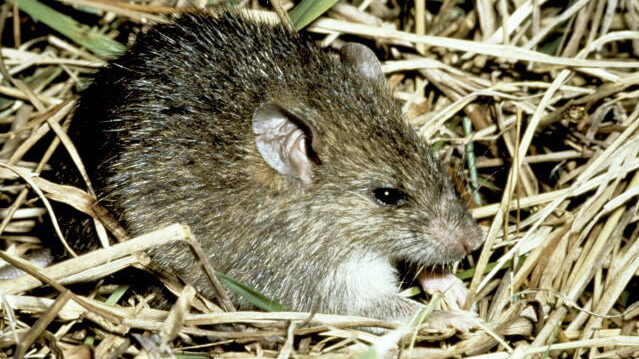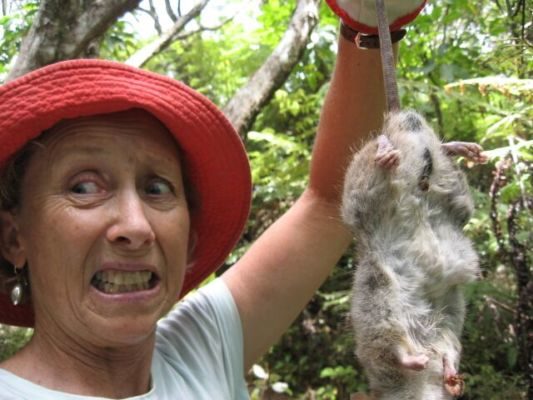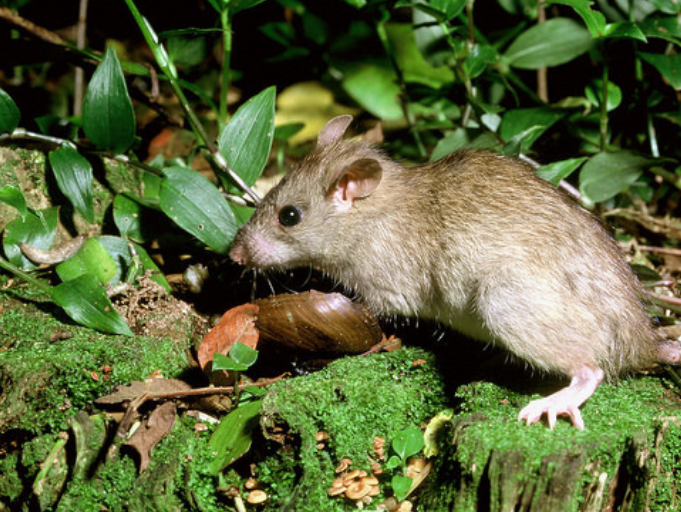New Zealand researchers have been taking a closer look at the family histories of Man’s long-time travelling companion – the rat. Genealogy meets gene analysis in this study, carried out by Auckland University researchers James Russell, Judith Robins and Rachel Fewster and published this month in the international journal Frontiers in Ecology and Evolution.

Kiore travelled here with Polynesian adventurers and ship and Norway rats accompanied European adventurers, whalers and colonists. But where specifically might they have come from? This study reveals some genetic clues and is the first comprehensive national survey of mitochondrial genetic diversity to be undertaken for R. norvegicus (Norway or brown rat) and R. rattus (ship or black rat) across New Zealand and surrounding islands.
So how do you track the ancestors of a rat? Not all rats are the same – just like us they have family characteristics passed on down through the generations. So to reveal their ancestry scientists can track rat genes and physical attributes and work back to where those particular variations are known to be common or thought to have originated.
“Tissue samples were obtained from 425 R. rattus (ship rats) and 130 R. norvegicus (Norway rats) across the New Zealand archipelago and neighboring islands. We sequenced a standard 545 base pair section of the mitochondrial D-loop in order to construct a modern phylogeography of the two species and to make inference on historical invasion pathways and spread across the country.”

What does it all mean? Well mitochondrial DNA is passed exclusively from a mother to her offspring, so it’s composition remains fairly constant through time, compared to chromosomal DNA which is found in the nuclei of cells and is a mix-up from both parents. Mitochondrial DNA gives a direct line of descent from original female ancestors. And phylogeography is a sort of rat-map showing where rats of particular types are most commonly found. Or, to quote Wikipedia:
Phylogeography is the study of the historical processes that may be responsible for the contemporary geographic distributions of individuals. This is accomplished by considering the geographic distribution of individuals in light of genetics, particularly population genetics.
When you’re tracing your family history, the best place to start is with what you and your family already know.
So, to borrow the family tree methodology, what do we know about New Zealand’s rats?
“Two species of invasive rats (Rattus norvegicus and R. rattus) arrived in New Zealand with Europeans in the mid to late eighteenth and nineteenth century respectively. They rapidly spread across the main islands of New Zealand and its offshore islands, displacing the historically introduced R. exulans (kiore). Today both species are widespread although the distribution of the sub-dominant R. norvegicus is patchy.”
Obtaining the 500-plus dead rats used in the study was a long-term collective effort involving rat-trappers and others from across New Zealand.
“Tissue samples were acquired from New Zealand and surrounding islands from 2001 to 2015 through research collections (i.e., regional studies), opportunistic collection (e.g., road kill), and requests to people or groups undertaking rat trapping. Collections were made with a focus on representative geographic coverage of as many islands as possible on which either rat species was known to be or have been present, and for islands larger than 100,000 hectares representative coverage was sought across those islands (i.e.,North, South,Stewart). As well as all outlying islands within the New Zealand Exclusive Economic Zone (Campbell, Chatham and Raoul Islands), samples were also obtained from Macquarie, Lord Howe and Norfolk Islands, and Port Jackson, Sydney (Australia).”
With such a wide-reaching collection area, it’s hardly surprising that not all the samples were fresh. But, just like solving old crimes with long-preserved DNA samples, the genetic material in this study didn’t need to be recent.
“Tissue samples ranged in quality from freshly caught to degraded by some weeks, but previous work assured us that this did not affect the quality of DNA extraction for the level of molecular resolution we required. Rat species identification was not always known or accurate, but was invariably confirmed following molecular typing.”
The study revealed that Norway rats are descended from two separate invasions (neither of which originated in Norway).
“We found limited diversity in R. norvegicus haplotypes, with two widespread haplotypes across New Zealand and its offshore islands most likely corresponding to two independent invasions, potentially with English and Chinese origins, respectively.”
North Island Norway/brown rats are apparently not the same as South Island ones.
“A total of 130 samples of R. norvegicus, from 24 islands, were included in our study. Notable absences included Kapiti and Mayor Islands (eradicated and no samples located). Two geographically partitioned haplotypes were predominant.”
Haplotype: group of genes inherited together from a single parent.
“Norhap01 was found throughout the North Island and neighboring islands; Raoul Island; Chatham Island; and Campbell Island. The substantially different Norhap02 was found throughout the South Island and neighboring islands. Both Norhap01 and Norhap02 were found on Stewart Island, but Norhap01 was restricted to the port town of Oban.”
Ship or black rats, however, were found to be a lot more diverse in their origins.
“A total of 425 samples of R. rattus, from 31 islands, were included in our study. The only absence of note was Arapawa Island (extant but no samples located). In contrast we found widespread diversity in R. rattus haplotypes across New Zealand and its offshore islands, most likely corresponding to at least four independent invasions to the main North and South Islands, Great Barrier Island archipelago, and Stewart Island archipelago. The most common R. rattus haplogroup was found throughout New Zealand and many of its offshore islands, as well as neighboring islands in the Tasman Sea, and has been documented elsewhere across the Pacific, but with European origins.”
So there wasn’t the same clear-cut North/South division in ship rat types as was seen with Norway rats.
“Two geographically partitioned haplotypes were predominant. Rathap01 was found in the upper North Island (north of the Auckland isthmus); most of the South Island (excluding Southland) and neighboring islands; as well as Big South Cape Island (off Stewart Island); Lord Howe Island; Norfolk Island; and Port Jackson, Sydney. The closely related Rathap02 was found in most of the North Island (south of the Auckland isthmus); southern-most South Island (Southland) and neighboring islands; as well as Ponui Island, Kawau Island, Kaikoura Island and neighbours, and Rakitu Island (all Hauraki Gulf); Macquarie Island; and Chatham Island. Two other haplotypes were common. Rathap04 was found in Great Barrier Island and Kaikoura Island and neighbours, and Rathap07 was found in Stewart Island and neighboring islands.”

What the research reveals is that – just like the Polynesian rat (kiore) and house mouse, whose genetics have been studied previously – rats arrived in New Zealand from multiple invasion events.
“From known historical records R. norvegicus was first observed in the North Island in 1772 and was widespread by the 1830s, while in the South Island the first observations were in the 1850s, and was first observed in Stewart Island in the 1870s. These records are in agreement with the two haplogroups identified, which are suggestive of at least two independent introductions.”
History also matches well with the genetic evidence in the case of ship rats.
“From known historical records R. rattus was only widespread in the North Island and Great Barrier Island after 1860, in the South Island after 1890, and was first observed on Stewart Island in 1911. These records are in agreement with the four geographically partitioned haplogroups identified, which are suggestive of at least four independent introductions across the North Island, South Island, Great Barrier Island, and Stewart Island.”
These figures represent the minimum independent introductions of each species which must have occurred.
“For both species our findings most likely represent a minimum number of introductions, as additional introductions of an already-extant haplotype may also have taken place, perhaps explaining observations such as the dispersed geographic distributions of Rathap01 and Rathap02 across the North Island and South Island.”
Interestingly, the genetic distributions of ship rats also match up with known variations in coat colour and toxin resistance, although the genes in this study don’t directly cause either of these characteristics.
“The documented proportion of R. rattus pelage phenotypes (ship rat fur colours) in a region also appears to correspond to our haplotype distributions. For example, higher proportions of the melanistic “rattus” pelage (black-coloured ship rats) occur in the South Island and upper North Island, corresponding with haplotype Rathap01, but are almost absent from Stewart Island, corresponding with Rathap07. The inheritance of pelage color is through known genetic markers unrelated to mtDNA haplotype (mitochondrial genes), but a geographical association between pelage color and haplogroup may arise due to the genetic makeup of different founding populations. Similarly, the rare occurrence in R. rattus of the Tyr25Phe mutation in VKorc1, which is associated with anti-coagulant resistance, also corresponds with the distribution of haplotype Rathap02.”
The full research paper is published in Frontiers in Ecology and Evolution and is freely available online.

